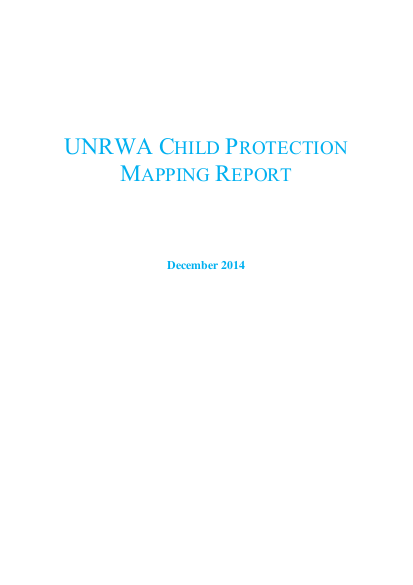
Palestine refugee children are exposed to considerable child protection challenges including: physical and emotional violence, sexual abuse, child marriage, detention, child labor, political violence and conflict. In the Palestine refugee context poverty, insufficient livelihood and employment opportunities, and overcrowded living conditions are just some of the common factors which exacerbate child protection concerns in all UNRWA’s fields of operation. The ongoing instability in the region has also affected Palestine refugees with the Syria crisis displacing children and families to neighboring countries. Significant numbers of Palestine refugee children in Syria have either lost both or one of their parents due to either death or disappearance.
In mid-2012, recognizing the need to strengthen the Agency’s approach to child protection, and bearing in mind its specific mandate to address the needs and rights of children, UNRWA initiated a series of consultations with field and programme department representatives to identify a way forward. The consultations re-iterated that, although UNRWA’s existing policy documents address aspects of child protection, they do not address child protection in a comprehensive and systematic way. Furthermore, the consultations highlighted the need to undertake a more detailed mapping of UNRWA activities and initiatives that intersect either directly or indirectly in child protection. Against this background, UNRWA, with support from, and in collaboration with, UNICEF undertook a mapping of child protection approaches across the Agency both at headquarters and its five fields of operation, namely, Gaza, West Bank, Jordan, Syria and Lebanon.
The mapping outlines UNRWA’s approaches to child protection in UNRWA’s programmes and operations as well as the ways in which to strengthen linkages between existing child protection tools and mechanisms. This mapping serves as a ‘first step’ and the basis for developing a subsequent Agency-wide Child Protection Framework.
The mapping exercise included a literature review, interviews and focus group discussions. Field visits were made to each of UNRWA’s areas of operations in June and July 2014. The methodology of the mapping was limited to qualitative information collected from UNRWA staff and some external agencies and did not include quantitative data collection and analysis.